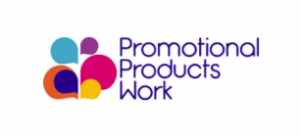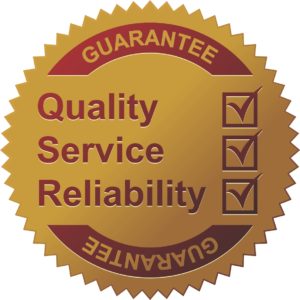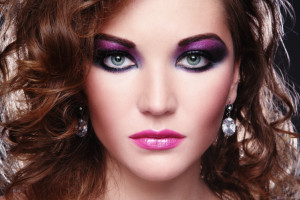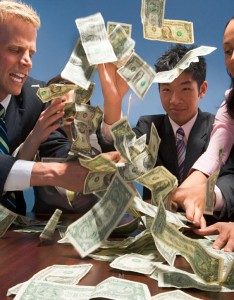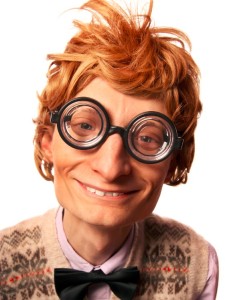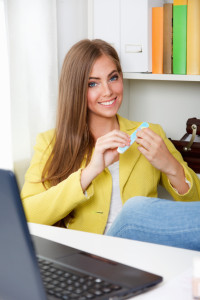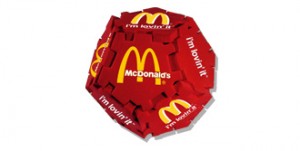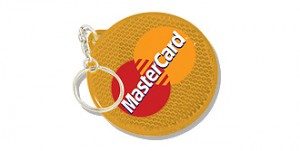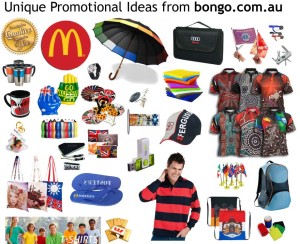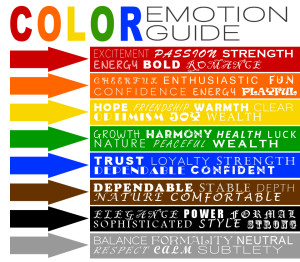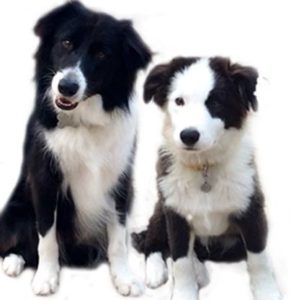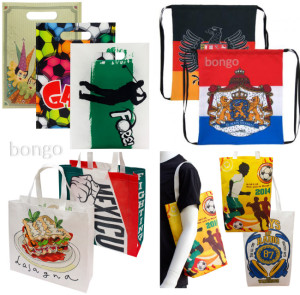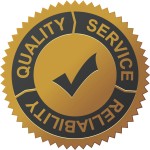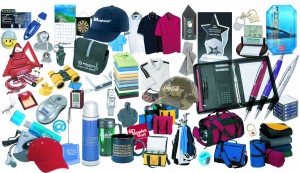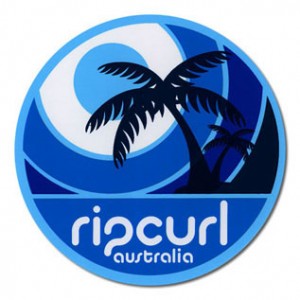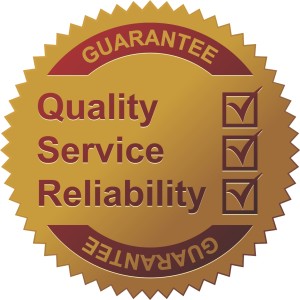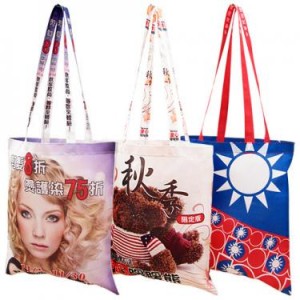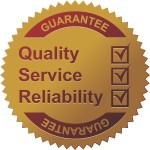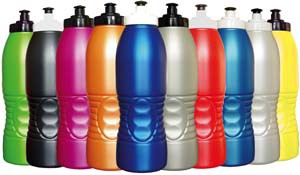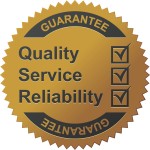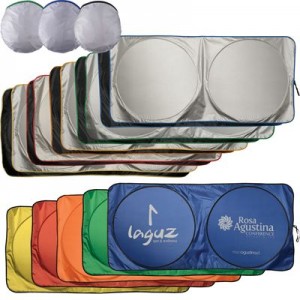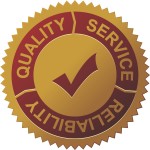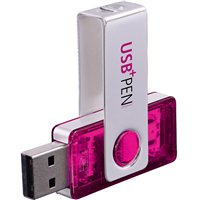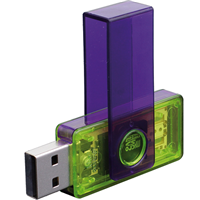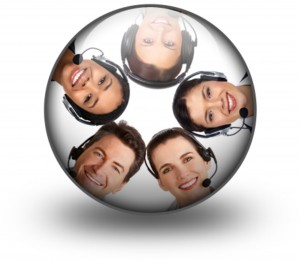25 Insane (But True) Facts About Promotional Products
If you’re in the business of finding promotional products, you know the impact they can have on an organisation’s marketing efforts. But do you know these fun facts about promotional products?
- Eight in 10 consumers own between one and 10 promotional products.
- Fifty-three percent of these people use a promotional product at least once a week.
- Six in 10 of them keep promotional products for up to two years.
- Only one in five people will trash an unwanted promotional product.
- Before receiving a promotional product, 55 percent of people had done business with the advertiser. After receiving a promotional product, 85 percent of people did business with the advertiser.
- With nearly six thousand impressions, bags generate more impressions than any other promotional product in the U.S.
- Thirty-one percent of U.S. consumers own a promotional bag.
- At one-tenth of a cent, bags tie with writing instruments for the lowest cost per impression of any promotional product in the U.S.
- The first known promotional products – commemorative buttons – trace back to 1789 when George Washington was elected president.
- Fifty-three percent of the time, promotional products create a more favorable impression of the advertiser.
- Forty-eight percent of consumers would like to receive promotional products more often.
- Consumers hang on to promotional products for an average of 6.6 months.
- Sixty-nine percent of consumers would pick up a promotional product if they deemed it useful.
- Sixty-three percent of consumers pass along the promotional products they no longer wish to keep.
- Eighty-nine percent of consumers can recall the advertiser of a promotional product they’d received in the last two years.
- Ninety-one percent of consumers have at least one promotional product in their kitchen, 74 percent have at least one in their workspace, 55 percent have at least one in their bedroom.
- Seventy-seven percent of consumers say a promotional product’s usefulness is the number-one reason to keep it, with health and safety products, computer products and writing instruments ranked as the most useful.
- The top five buyers of promotional products are clients in education, finance, not-for-profit, healthcare, and construction.
- Wearables are the top product category, followed by writing instruments, bags, calendars and drinkware.
- The first promotional product tradeshow was held in 1914 – there were 32 exhibitors.
- Women are more likely to have bags, writing instruments and calendars, whereas men are more likely to own shirts and caps.
- Ownership of logoed outerwear is highest in the Midwest, with 15 percent of people owning an item.
- Logoed mugs in particular are more effective advertising than radio and television spots; 57 percent of people were able to recall the advertiser on a mug, versus 32 percent of radio and 28 percent of T.V.
- Adding a promotional product to the media mix increases the effectiveness of other media by up to 44 percent.
- Promotional products draw as many as 500 percent more referrals from satisfied customers than an appeal letter alone.
Are you still skeptical about the power or promotional products?
With thanks to PPAI
7 Golden Rules for Picking Great Promotional Products
Everyday customers old and new reach out to BONGO to get sound advice on what promotional products they should use for their business. But what makes a great promotional product? With 1000’s of lines available online, it can be daunting to get to grips with the options!
To help you, here are 7 golden rules for picking great promotional products:
QUALITY
Quality is the key. If a quality and useful promotional product is received by your client - they will certainly remember you.
DESIRABILITY
This is especially important to get right as gifting potential leads an item that isn’t desirable, may reflect your company in the same light: a desirable item denotes a company of quality!
USABILITY
Understand that usability key! Statistics show that 90.4% of people report currently owning or possessing a promotional product received in the last 24 months so it stands to reason that the most useful the item is, the more likely it is that your promotional product will stick around, day in, day out.
RELEVANCE
Understand that relevance is a big factor – and every sector is different. A branded lip balm for a Lawyer’s conference – is that the best fit? Would that gift be relevant and well received by those potential leads? Probably not. Understand your target audience and pick the most desirable items for the people you want to want to reach out to.
CREATIVITY
Use promotional products to make a lasting statement about who your company are, and what you offer. Take time to think of a creative idea that ties in with your brand marketing strategy – what special service do you offer? What goods can you deliver? Don’t be afraid to think outside the box – be fun! Are you a dentist? Why not send out some sugar-free sweets in a playful way? Trying to recruit people to sign up to your gym? Why not gift them a free water bottle so that you’re always on their desk, reminding them to get in touch and get fit – the possibilities are endless!
INTRIGUING
Try and see your product to introduce a bit of curiosity with your potential customers, we can help you with plenty of inspiration! For example, is a client a PR company? Why not send a branded pen with an inscription – ‘What could we write for you?’. Be playful, think outside the box. What would intrigue you to make that enquiry?
GOOD VALUE
However great all the other rules - just remember what would be best associated with your brand: VALUE.
Promo is not for me!
The client is always right…right? Well sometimes..... always…
We’re sure that on occasions, potential clients may say, ‘Promo? Nah, I don’t need promo’.
However, as an industry, we know differently. Here’s what we came up with...
I don't need promo because...
I like to blow our money on big spend marketing and even bigger hair.
This glitzy, shoulder padded, glamorous marketer thinks spending big is impressive. She likes to spend more than she needs to get her message across: she loves commercial radio (5.8 cents per impression), magazine ads (4.5 cents per impression), and TV (1.8 cents per impression). Why would she love tangible product marketing when it comes in at only 0.5 cent per impression? She's impressed by the wine list at the long lunch, not by marketing effectiveness.
We don't need promo because...
We're blood-suckers: you can only take a customer once, right?
These guys see people as walking wallets and use any means to separate the customer from their cash. Their motto is 'there are plenty of fish in the sea', so there is no need to show customers you appreciate them. That is why, with 64% of marketers rating promo as the channel most able to make a person feel appreciated, tangible product marketing is not for these guys. They prefer to stick with flat media like print and digital and avoid building any kind of customer connection at all.
I don't need promo because...
With all this charisma, all I need is a video on You Tube and people just chuck money at me!
It's hard to argue with sheer animal magnetism to drive a cause. This all-knowing marketer has it all, so he can scoff at his peers who have to work hard to drive loyalty. He knows that tangible product marketing is the best channel for invoking loyalty to causes or events (59%) - he just doesn't need the help. (and girls - he's single!).
I don't need promo because...
If my customers respond to my marketing, I’ll have to work harder
We all know how much easier it would be without those pesky customers. This marketer has it all worked out. She can impress her boss with flashy, high-profile campaigns and by using buzzwords, charts and spreadsheets, all the while avoiding the channel that is most effective in getting customers to take action - yes, you guessed it - tangible product marketing! Rated by 51% of marketers as the best channel at being able to get a person to take action, it kills TV at 19%, digital 11%, online 10% and print 9%. But those channels do let her chill on a Friday...
We don't need promo because...
The business is a front for the MOB
Understandably, if like one Mr Soprano, you want to fly under the radar and don’t want customers recalling your name, then you don’t want promo. The problem with tangible product marketing is the way it fosters brand recall and awareness, with 61% of marketers rating it as the best channel for constant message reinforcement compared to 15% for TV, 10% for print, 8% for digital and 6% for direct mail. See, too many witnesses.
Of course you need promo! In the real world, tangible product marketing if spend efficiently, creates positive brand perceptions, recall and results.
The statistics quoted in this article are from research conducted by BPMA and ASI.
Targeted Promotional Campaigns
Targeted Promotional Campaigns not only create better connections, they can even help redefine a brand or open up new markets. Research conducted by APPA shows that the current generation of consumers appreciates promotional products more than any generation before. This is because they offer a tangible value-add to their purchasing experience. A message passes from the brand to the consumer that says: “We are rewarding your brand loyalty. Thank you!”
Recent research supports this:
- 75 percent of human resource managers surveyed are using promotional products in recognition programmes
- 72 percent of marketing and HR managers say promotional products are very effective in motivation and retention of staff
- 100 percent of advertisers said adding a promotional product returned a favourable response to their campaign
- 69 percent of advertisers said promotional products increased brand interest
- 84 percent of advertisers said promotional products created more favourable impressions
A critical part of making an advertising campaign is determining a campaign theme as it sets the tone for the individual advertisements and other forms of marketing communications that will be used. The campaign theme is the central message that will be communicated in the promotional activities. The campaign themes are usually developed with the intention of being used for a substantial period but many of them are short-lived due to factors such as being ineffective or market conditions and / or competition in the marketplace and marketing mix.Targeted Advertising Campaigns are developed to achieve a particular goal or a set of goals. Such goals typically include establishing a brand, raising brand awareness, increasing the rate of conversions/sales. The degree of success or failure at reaching these goals is measured with analytic tools.
Promotional Products - Then and Now
Promotional Products - Then and Now. Promotional items, promotional products, promotional gifts, or advertising gifts, sometimes nicknamed swag or schwag, are articles of merchandise (often branded with a logo) that are used in marketing and communication programs. They are given away to promote a company, corporate image, brand, or event. These items are usually imprinted with a company's name, logo or slogan, and given away at trade shows, conferences, and as part of guerrilla marketing campaigns. The first known promotional products in the United States are commemorative buttons dating back to the election of George Washington in 1789. During the early 19th century, there were some advertising calendars, rulers, and wooden specialties, but there wasn’t an organized industry for the creation and distribution of promotional items until later in the 19th century.
Jasper Meeks, a printer in Coshocton, Ohio, is considered by many to be the originator of the industry when he convinced a local shoe store to supply book bags imprinted with the store name to local schools. Henry Beach, another Coshocton printer and a competitor of Meeks, picked up on the idea, and soon the two men were selling and printing bags for marbles, buggy whips, card cases, fans, calendars, cloth caps, aprons, and even hats for horses. In 1904, 12 manufacturers of promotional items got together to found the first trade association for the industry.
That organization is now known as the Promotional Products Association International or PPAI, which currently has more than 10,000 global members. PPAI represents the promotional products industry of more than 22,000 distributors and approximately 4,800 manufacturers. The UK & Ireland promotional merchandise industry formally emerged as corporate marketing became more sophisticated during the late 1950s. Before this companies may have provided occasional gifts, but there was no recognised promotional merchandise industry.
The real explosion in the growth of the promotional merchandise industry took place in the 1970s. At this time an ever increasing number of corporate companies recognised the benefits gained from promoting their corporate identity, brand or product, with the use of gifts featuring their own logo. In the early years the range of products available were limited; however, in the early 1980s demand grew from distributors for a generic promotional product catalogue they could brand as their own and then leave with their corporate customers. In later years these catalogues could be over-branded to reflect a distributor’s corporate image and distributors could then give them to their end user customers as their own. In the early years promotional merchandise catalogues were very much sales tools and customers would buy the products offered on the pages.
In the 1990s new catalogue services emerged for distributors from various sources. In the nineties there was also the creation of ‘Catalogue Groups’ who offered a unique catalogue to a limited geographical group of promotional merchandise distributor companies. Membership of a Catalogue Group could also offer improved buying terms, a network of fellow distributor companies, & provide other support services. A catalogue group offers discounted products to a select group of distributors who have all been in the industry for over three years. Members of the this group have regional exclusivity as one of their perks. Up until the 1990s the industry had a peak season in which the majority of promotional products were sold. The season featured around Christmas & the giving of gifts. This changed significantly in the early 1990s as Christmas gifts became less appropriate in a multicultural Britain. Corporate companies were also becoming more inventive in their marketing and were now using promotional merchandise throughout the year to support the promotion of brands, products & events. In the early 21st century the role of a promotional merchandise catalogue started to change, as it could no longer fully represent the vast range of products in the market place. By 2007 catalogues were being mailed to targeted customer lists, rather than the blanket postal mailings that had taken place before. The catalogue had now become seen more as a ‘business card’ demonstrating the concept of what a company did, rather than a critical sales tool. In 2009 published results from research involving a representative group of distributor companies, which indicated the usage of hard copy catalogues was expected to fall up to 25% in 2010.
Distributor companies are experts in sourcing creative promotional products. Traditionally, to ensure that they had an effective manufacturer network, they kept themselves aware of the trade product ranges available by attending exhibitions across the world (namely the Trade Only National Show in the UK, PSI in Europe and the PPAI Show in Las Vegas, NV) & from mailings received from manufacturers themselves. In 2004 the way the trade sourced promotional products began to change with the launch an online trade sourcing service which united distributors with manufacturers worldwide. This service is purely for vetted trade promotional merchandise distributor companies & is not available to corporate end user companies. By 2008 almost every distributor had a website demonstrating a range of available promotional products. Very few offer the ability to order products online mainly due to the complexities surrounding the processes to brand the promotional products required. Sourcing Promotional merchandise is, in the main, purchased by corporate companies in USA, Canada, the UK & Ireland through promotional merchandise distributor companies. In the United States and Canada, these distributors are called "Promotional Consultants" or "promotional product distributors."
Distributors have the ability to source & supply tens of thousands of products from across the globe. Even with the advent and growth of the Internet this supply chain has not changed, for a few reasons: Promotional products by definition are custom printed with a logo, company name or message usually in specific PMS colors. Distributors help end-users gather artwork in the correct format and in some cases, distributors might create artwork for end-users. Distributors then interface with manufacturers, printers or suppliers, forwarding artwork in the correct format and correct size for the job. Since good distributors are well aware of several manufacturers' capabilities, they can save an end-user time and money searching for a printer or manufacturer who can produce and ship the end-user's products on time, on specification and in the required quantities. Many distributors operate on the internet and/or in person. Many suppliers wish not to invest in the staffing to service end-users' needs, which is the purpose of merchandise distributor companies.
Products and Promotional merchandise is used globally to promote brands, products, and corporate identity. They are also used as giveaways at events, such as exhibitions and product launches. Promotional products can be used for non-profit organizations to promote their cause, as well as promote certain events that they hold, such as walks or any other event that raises money for a cause. Almost anything can be branded with a company’s name or logo and used for promotion. Common items include t-shirts, caps, keychains, posters, bumper stickers, pens, mugs, or mouse pads. The largest product category for promotional products is wearable items, which make up more than 30% of the total. Eco-friendly promotional products such as those created from recycled materials and bamboo, a renewable resource, are also experiencing a significant surge in popularity. Most promotional items are relatively small and inexpensive, but can range to higher-end items; for example celebrities at film festivals and award shows are often given expensive promotional items such as expensive perfumes, leather goods, and electronics items. Companies that provide expensive gifts for celebrity attendees often ask that the celebrities allow a photo to be taken of them with the gift item, which can be used by the company for promotional purposes.
Other companies provide luxury gifts such as handbags or scarves to celebrity attendees in the hopes that the celebrities will wear these items in public, thus garnering publicity for the company's brand name and product. Brand awareness is the most common use for promotional items. Other objectives that marketers use promotional items to facilitate include employee relations and events, tradeshow traffic-building, public relations, new customer generation, dealer and distributor programs, new product introductions, employee service awards, not-for-profit programs, internal incentive programs, safety education, customer referrals, and marketing research. Promotional items are also used in politics to promote candidates and causes. Promotional items as a tool for non-commercial organizations, such as schools and charities are often used as a part of fund raising and awareness-raising campaigns.
A prominent example was the livestrong wristband, used to promote cancer awareness and raise funds to support cancer survivorship programs and research. Collecting certain types of promotional items is also a popular hobby. In particular, branded antique point of sale items that convey a sense of nostalgia are popular with collectors and are a substantial component to the antique industry. The giving of corporate gifts vary across international borders and cultures, with the type of product given often varying from country to country. Promotional merchandise is rarely bought directly by corporate companies from the actual manufacturers of the promotional products. A manufacturer's expertise lies in the physical production of the products, but getting a product in front of potential customers is a completely different skill set and a complex process.
Within the UK & Ireland promotional merchandise industry a comprehensive network of promotional merchandise distributor companies exist. A promotional merchandise distributor is defined as a company who "has a dedicated focus to the sale of promotional merchandise to end users". (An 'end user' is a corporate company or organisation that purchases promotional merchandise for their own use.) These distributor companies have the expertise to not only take the product to market, but are also to provide the expert support required. The unique aspect of promotional merchandise is that on most occasions the product is printed with the logo, or brand, of a corporate organisation.
The actual manufacturers rarely have the set up to actually print the item. Promotional merchandise distributor companies are expert in artwork and printing processes. In addition to this the promotional merchandise distributors also provide full support in processing orders, artwork, proofing, progress chasing & delivery of promotional products from multiple manufacturing sources. Trade associations In the UK, the industry has two main trade bodies, Promota (Promotional Merchandise Trade Association) founded in 1958, and the BPMA (British Promotional Merchandise Association) established in 1965. These trade associations represent the industry and provide services to both manufacturers & distributors of promotional merchandise. In the United States, PPAI (the Promotional Products Association International) is the not for profit association, offering the industry's largest tradeshow (The PPAI Expo), as well as training, online member resources, and legal advocacy.
Colour and Emotion in Promotional Advertising
Colour and Emotion in Promotional Advertising affects us all. Every colour creates an emotional reaction in people. In design and in choosing promotional products we use colour to help guide emotion and give people an immediate feeling the first time they interact with something. In the design world, colours are purposely selected to meet a bigger goal. What is it that are we trying to say about a company, a product or a brand? Certain colours can attract attention and can convey the feeling of the company and it's branding without even having to say a word. Examples are McDonalds, Nike, Apple, Microsoft - just a few of the companies that don't need words - just icons and colours.
These are the common patterns with regard to colours and emotions that have been identified as to how people perceive colours and what impact this has when customers are purchasing products. There's no doubt that colours have a big impact on the end result - so next time you are purchasing your promotional product it would wise to think about what product colour would be best to truly represent your company or brand in the most accurate and appealing way.
Examples of colour meanings:-
- RED * energetic, attention-grabbing, exciting and aggressive
- YELLOW * cheerful, friendly, positive and energetic
- ORANGE * fun, playful, childlike, happy, energetic, modern
- BLUE * reliable, secure, trustworthy
- GREEN * trustworthy, refreshing, restful, soothing
- BROWN * stable, secure, durable
- BEIGE * durable, classic, neutral
- BURGUNDY * elegant, expensive
- PINK * romantic, soft, tender
- PURPLE * mysterious, sensual, regal
- LAVENDER * nostaligic, delicate
- GREY * classic, timeless, soothing
- WHITE * innocent, simple, clean, sterile
- BLACK * classic, elegant, serious, bold, powerful
Good advice to keep in mind when consideration your next range of promotional products.
Pet Products
Pet Products - Don't forget your Best Friend! Our range of pet products will ensure that your best friend is never forgotten. The pet products range include dog leads, pet food and water bowls that can all be branded with your company or pet product logo. Photos courtesy of Suki, Billy the Border Collie and little Biscuit.
Pet products have become increasingly popular over the years as more and more people welcome pets into their homes. As a pet owner, you know how important it is to keep your furry friend happy and healthy. At our website, you can find a wide range of pet products that will help you do just that.
One of the most important things you can do for your dog is to keep them safe and secure when you're out and about. Our dog collars and leads are perfect for keeping your dog close by your side, while also giving them the freedom to roam and explore. They come in a variety of styles and colors, so you can find the perfect match for your furry friend.
Of course, your dog needs to eat and drink, too. That's why we offer a range of dog bowls that are designed to keep your pet well-fed and hydrated. Our bowls are made from high-quality materials and are available in different sizes and styles to suit your pet's needs.
Finally, if you're looking for a unique way to promote your brand, why not consider our promotional pet products? These items are perfect for pet-related businesses and events, and can help you stand out from the crowd.
We take great pride in our pet products, and we're sure that you will love them.
Unique Promotional Bags from Bongo are the best advertising tool to deliver your product branding message. Our huge range of non woven, cotton and polyester bags can be printed wih full colour printing all over. The bags are available in a large of sizes and specifications to suit your needs. Promoting your brand and logo on any kind of bag bag is an excellent way to keep your brand or product visible with the public. Conventional types of advertising i.e. television & radio ads normally run for short periods of time. With branded promotional bags - your product become a billboard advisement that can be used and exposed constantly.
It's easy to generate new business with a unique promotional bag. Not only can the giving of a quality and unique bag put a smile on the face of your clients, but will also help to retain your customers. It will also most certainly help you generate new business via the product's branding exposure.
Increase your Sales & Brand recognition with good quality, well thought out promotional products. Surveys show that around 39 percent of people who were given a promotional product within the last year were able to recognize the name of the company.
Our large range of bag styles include - backpacks, backpacks & drawstring bags, bag accessories, beach bags, biodegradable bags, compendiums, computer bags, conference & business bags, cooler bags, cotton & calico bags, custom made bags, enviro eco bags, full color printed bags, jute bags, laptop & iPad pouches, leather bags, luggage tags, lunch boxes and bags, non woven bags, paper bags, pencil cases & organizers, picnic bags, pouches, shoe bags, sling & shoulder bags, sports bags, tote & shopping bags, travel bags & luggage, waist bags, wallets and wine bags.
Promotional Products in Hard Economic Times provide affordable, accountable and measurable advertising.
It is important to continue to acknowledge and thank clients, employees and suppliers.
Marketers spend more than $1.34 billion dollars (AUS) and $144 million (NZ) a year on promotional products for one reason, they work.
- 52% say their impression of a company is more positive after receiving a promotional product.
- 76% recall the name advertised on the product.
- 55% keep the item for more than one year.
- Nearly 50% of recipients use them daily.
- 52% of people do business with a company after receiving a promotional product
- Spend less, achieve more and remind people about the benefit of doing business with you.
Promotional Products in the Home:
- How many people have at least one promotional product in their kitchens? 91%
- How many have 2 or more in their kitchens? 81%
- In fact, the kitchen is the #1 place people use and keep their promotional products.
- (People spend on average 3-5 hours a day in their kitchens)
Promotional Products in the Office:
- How many people have at least one promotional product in their offices? 74%
- How many have 2 or more in their offices? 59%
- In the work place, more than half of people hold onto their promotional product from 1 to more than 4 years.
Reach & Recall:
- 71% of business travellers surveyed reported receiving a promotional product in a 12 month period.
- 33.7% of this group had the item on their person.
- 56% of people kept their promotional product for more than one year.
- 76.4% said they kept their promotional product because it was useful.
- 76.1% of the respondents could recall the advertisers name on the product.
How effective are Promotional Products in staff retention, motivation and brand interest?
- 75% of Human Resource mangers surveyed are using promotional products in recognition programs.
- 72% of marketing and HR managers say that promotional products are very effective in motivation and retention of staff.
- 100% of advertisers said that adding a promotional product returned a favourable response to their campaign.
- 69% of advertisers said promotional products increased brand interest and 84% it created more favourable impressions of the brand itself.
Understanding the medium:
- A product is just a product, until it is linked with a promotion, it then becomes an advertisement.
- The most successful advertising campaigns are the result of a planned strategy.
- Throwing products at your target market without that planning is a waste your marketing dollars.
- The product is only one component in the whole campaign.
- The creativity used to get a response is the key to increasing profits and promoting brands.
Successful campaigns require Strategic ‘logistical’ and ‘emotional’ roll out
- Action engagement triggers
- Data collection analysis
- Technical logo application knowledge
- Creating the difference between a ‘passive’ and ‘active’ promotion
For over 30 years BONGO has supplied promotional products to Australian Businesses and is one of Australia's leading suppliers of innovative and quality promotional products.
Adhesive Stickers
Adhesive Stickers are a fantastic way to promote your business or your brand. Bongo produces a huge range of stickers for all advertising situations. Our range includes car stickers, electrostatic stickers, floor sticker graphics, metallic stickers, paper stickers, reflective stickers, sticker sheets and vinyl and weatherproof stickers.
Stickers are frequently distributed as part of promotional, advertising, and political campaigns; for example, in many voting districts in the U.S., stickers indicating an individual has voted are given to each voter as they leave the polling place, largely as a reminder to others to vote. Observers may clap hands, honk a horn or otherwise applaud a good sticker.
Identification of vehicle registration and last service details are two examples of stickers on the inside of most car windscreens. The term "window sticker" is generally used for vinyl labels which are stuck to the inside of a vehicle's window, as opposed to water-resistant stickers that are stuck to the outside of a vehicle but can be affixed to anything.
For that last minute rush order – we offer a 3-5 day express service on some of our products. Let me take the worry about fulfilling your urgent order. We are here to help you with ideas on a large range of products that are available within a 3-5 business day turnaround.
- The production for 3-5 business day products starts from the time that artwork has been signed off.
- If you have an account with us – then our standard trading terms are applicable otherwise prepayment is required. We accept Mastercard and Visa.
- Re freight – freight is additional and is oncharged at our cost. We use same day or overnight couriers. In this production delivery timing we are not responsible for any delays which may be caused by freight companies once the goods have been despatched. You can always arrange a pick up – using your own freight company.
Our 3-5 day express service include the following products:-
Antibacterial gel, badge holders, badges, bags, banners, bottled water, business card holders, calculators, car accessories, coasters, personal items, drink bottles, fans, flags, flashlights, food containers, fun and novelty items, highlighters, keychains, lanyards, lip balm, luggage tags, magnets, mobile accessores, ipad and iphone accessories, mouse mats, mug, pens, notepads, packaging, pedometers, pencil cases, pencils, coloured pencil pack, pouches, rulers, safety products, stickers and transfers, anti stress items, sunglasses, tools, torches, usbs and wristbands - to mention a few 🙂
Printed promotional drink bottles are very popular in the promotional market for several good reasons. Quite simply, they are genuinely useful and extremely popular. They look great printed or engraved. Offer great logo visibility. The products are well used in the office, the car, sports events, and outdoor and sporting activities. Printed drink bottles are also very durable. Which means that your logo will be seen for longer. There's not need to worry that about running out of batteries or breaking down as they are made of durable materials. An environmentally friendly BPA free item. We offer a great variety of styles from light weight plastic sports bottles to high quality durable stainless steel. Available in a variety of price points so you are sure to find one that suits your tastes and budget.
So where price, longevity of impact and high logo visibility are important to your promotional campaign it is hard to go past the promotional drink bottle. Next time your staff, customer or whomever the lucky recipient of your next promotional travel mug is, reaches for a drink bottle to take to the sports field, to gym, to their office or anywhere else they need to drink (everywhere) it's your logo they and everyone else will see and your company they will all be thinking of. Promotional drink bottles are great way of taking your promotional dollar further.
Automotive Promotional Products
With people these days spending so much time in their cars, it is no wonder that products associated with cars make brilliant automotive promotional products. From key rings to outdoor products your clients will thank you every time they reach for that umbrella, or for that travel mug with your logo. Choose well and they will associate your logo with that wonderful picnic they had with their family... with their time laying under that beach umbrella... or with the first aid kit that was there when they needed it. Whatever it is, your logo could be there when it matters most. Check out a vast range of car related promotional products.
The interior of a closed car parked in a non-shaded spot exposed to extensive sunlight can sustain sun and heat damage. Sunlight passing through the car's windshield produces the greenhouse effect, heating the interior to a temperature much higher than the outside air. Excessive heat and prolonged exposure to direct sunlight can make the dashboard fade and eventually crack, cause seat upholstery discoloration and aging, etc.
The windshield glass itself blocks most of the UV light and some of the infrared radiation. But it can't protect from the visible light that mostly penetrates through it and gets absorbed by the objects inside the car. The visible light that passes into the interior through the windshield is converted into the infrared light which, in its turn, is blocked by the glass and gets trapped inside, heating up the interior. Windshield sun shades have a reflective surface to bounce the light back, reducing the interior temperature.
Create your own Unique USB - low minimums. Finally - a custom printed, top quality USB flash drives are available for as low as 25 units. These German made USBs come with a 1 year warranty and have a capacity of 4GB. Pick and match and make you your own USB drive by selecting the colour for each part to match your corporate logo colours - and then assemble to make up your own unique USB. There are two styles available - one is all plastic and the second has a metal clip which can be pad printed or laser engraved.
The clip colours are available in transparent plastic in colours of clear, black, blue, red, dark green, light green, purple and yellow. Solid colours are white, black, blue, red, green, yellow, grey or silver.
The main section colours are available in clear, black, blue, red, dark green, light green, purple, yellow. Solid colours are white, black, blue, red, green, yellow, grey or silver.
The side bar colours are clear, black, blue, red, dark green, light green, purple, yellow. Solid colours are white, black, blue, red, green, yellow, grey or silver.
Print areas are 25mm x 12mm on the clip; 10mm x 15mm on the main section and 30mm x 4mm on the side bar. Decoration methods are via pad printing or laser engraving.
Biodegradable Non Woven Bags
Our new range of environmentally friendly biodegradable bags are the perfect replacement for paper or plastic bags. These biodegradable non woven fabric bags are made with eco friendly material and are printed with full colour printing all over. We have a large range of different sizes available with cut out handles or with short or long shoulder handles. Enviro bags are becoming increasingly popular and are econonomical. Perfect for retail stores, conferences and events, general advertising and promotion.
Whether it be shopping bags, sports bags, cooler bags or travel bags, rarely do we leave our homes or offices without a bag of one description or another... which means that they make an excellent promotional product. Usually with a large print area and often having multiple print areas they provide an excellent opportunity to make a big impact.... and because they are so useful they are guaranteed to drive your promotional dollar further and maximise the effectiveness of your next promotional campaign.
Nonwoven fabrics are broadly defined as sheet or web structures bonded together by entangling fiber or filaments (and by perforating films) mechanically, thermally or chemically. They are flat or tufted porous sheets that are made directly from separate fibers, molten plastic or plastic film. They are not made by weaving or knitting and do not require converting the fibers to yarn. Typically, a certain percentage of recycled fabrics and oil-based materials are used in nonwoven fabrics. The percentage of recycled fabrics vary based upon the strength of material needed for the specific use. In addition, some nonwoven fabrics can be recycled after use, given the proper treatment and facilities. For this reason, some consider nonwovens a more ecological fabric for certain applications, especially in fields and industries where disposable or single use products are important, such as hospitals, schools, nursing homes and luxury accommodations.
Nonwoven fabrics are engineered fabrics that may have a limited life, single-use fabric or a very durable fabric. Nonwoven fabrics provide specific functions such as absorbency, liquid repellence, resilience, stretch, softness, strength, flame retardancy, washability, cushioning, thermal insulation, acoustic insulation, filtration, use as a bacterial barrier and sterility. These properties are often combined to create fabrics suited for specific jobs, while achieving a good balance between product use-life and cost. They can mimic the appearance, texture and strength of a woven fabric and can be as bulky as the thickest paddings. In combination with other materials they provide a spectrum of products with diverse properties, and are used alone or as components of apparel, home furnishings, health care, engineering, industrial and consumer goods.
Promotional Products, properly implemented, have a longer physical and mental retention value than many 'above the line' advertising methods - for less cost.
The true power of promotional products is not simply the product. It's the creative use of the right product in advertising and response elicited by the delivery of that product in a properly constructed promotional campaign.
Promotional items, promotional gifts, advertising gifts, promotional merchandise are the ideal thing to promote a company, brand, event or corporate image. Perfect for trade shows, conference and marketing campaigns. The first know promotional products used date back to the United States in the 1700's. The first know promotional products were commemorative buttons dating back to the election of George Washington in 1789.
The United Kingdom, United States promotional merchandise industry formally emerged as corporate marketing became more sophisticated during the late 1950s. Before this companies may have provided occasional gifts, but there was no recognised promotional merchandise industry. The real explosion in the growth of the promotional merchandise industry took place in the 1970s. At this time an ever increasing number of corporate companies recognised the benefits gained from promoting their corporate identity, brand or product, with the use of gifts featuring their own logo. In the early years the range of products available were limited; however, in the early 1980s demand grew from distributors for a generic promotional products catalogue they could brand as their own and then leave with their corporate customers.
In later years these catalogues could be over-branded to reflect a distributor’s corporate image and distributors could then give them to their end user customers as their own. In the early years promotional merchandise catalogues were very much sales tools and customers would buy the products offered on the pages.
In the 1990s new catalogue services emerged for distributors from various sources. In the nineties there was also the creation of ‘Catalogue Groups’ who offered a unique catalogue to a limited geographical group of promotional merchandise distributor companies. Membership of a Catalogue Group could also offer improved buying terms, a network of fellow distributor companies, & provide other support services.
Up until the 1990s the industry had a peak season in which the majority of promotional products were sold. The season featured around Christmas & the giving of gifts. This changed significantly in the early 1990s as Christmas gifts became less appropriate in a multicultural world. Corporate companies were also becoming more inventive in their marketing and were now using promotional merchandise throughout the year to support the promotion of brands, products & events. In the early 21st century the role of a promotional merchandise catalogue started to change, as it could no longer fully represent the vast range of products in the market place. By 2007 catalogues were being mailed to targeted customer lists, rather than the blanket postal mailings that had taken place before. The catalogue had now become seen more as a ‘business card’ demonstrating the concept of what a company did, rather than a critical sales tool. In 2009 published results from research involving a representative group of distributor companies, which indicated the usage of hard copy catalogues was expected to fall up to 25% in 2010.
Distributor companies are experts in sourcing creative promotional products. Traditionally, to ensure that they had an effective manufacturer network, they kept themselves aware of the trade product ranges available by attending exhibitions across the world. In 2004 the way the trade sourced promotional products began to change with the launch an online trade sourcing service which united distributors with manufacturers worldwide.
By the early 2000's almost every distributor had a website demonstrating a range of available promotional products. Very few offer the ability to order products online mainly due to the complexities surrounding the processes to brand the promotional products required.
Promotional merchandise is used globally to promote brands, products, and corporate identity. They are also used as giveaways at events, such as exhibitions and product launches. Promotional products can be used for non-profit organizations to promote their cause, as well as promote certain events that they hold, such as walks or any other event that raises money for a cause.
Almost anything can be branded with a company’s name or logo and used for promotion. Common items include t-shirts, caps, keychains, bumper stickers, pens, mugs, or mouse pads. The largest product category for promotional products is wearable items, which make up more than 30% of the total. Eco-friendly promotional products such as those created from recycled materials and bamboo, a renewable resource, are also experiencing a significant surge in popularity.
Most promotional items are relatively small and inexpensive, but can range to higher-end items; for example celebrities at film festivals and award shows are often given expensive promotional items such as expensive perfumes, leather goods, and electronics items. Companies that provide expensive gifts for celebrity attendees often ask that the celebrities allow a photo to be taken of them with the gift item, which can be used by the company for promotional purposes. Other companies provide luxury gifts such as handbags or scarves to celebrity attendees in the hopes that the celebrities will wear these items in public, thus garnering publicity for the company's brand name and product.
Brand awareness is the most common use for promotional items. Other objectives that marketers use promotional items to facilitate include employee relations and events, tradeshow traffic-building, public relations, new customer generation, dealer and distributor programs, new product introductions, employee service awards, not-for-profit programs, internal incentive programs, safety education, customer referrals, and marketing research.
Promotional items are also used in politics to promote candidates and causes. Promotional items as a tool for non-commercial organizations, such as schools and charities are often used as a part of fund raising and awareness-raising campaigns. A prominent example was the livestrong wristband, used to promote cancer awareness, AIDS awareness and raise funds to support cancer survivorship programs and research.
Collecting certain types of promotional items is also a popular hobby. In particular, branded antique point of sale items that convey a sense of nostalgia are popular with collectors and are a substantial component to the antique industry.
Promotional merchandise is rarely bought directly by corporate companies from the actual manufacturers of the promotional products. A manufacturer's expertise lies in the physical production of the products, but getting a product in front of potential customers is a completely different skill set and a complex process. Around the world the promotional merchandise industry is a comprehensive network of promotional merchandise distributor companies. The unique aspect of promotional merchandise is that on most occasions the product is printed with the logo, or brand, of a corporate organisation. Promotional merchandise distributor companies are expert in artwork and printing processes. In addition to this the promotional merchandise distributors also provide full support in processing orders, artwork, proofing, progress chasing & delivery of promotional products from multiple manufacturing sources.

